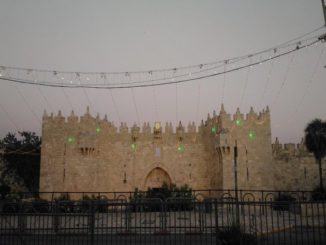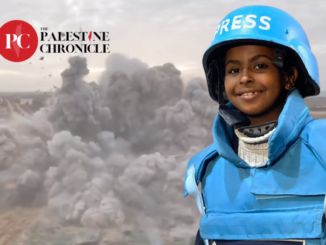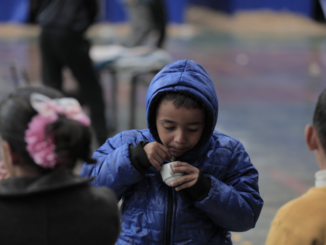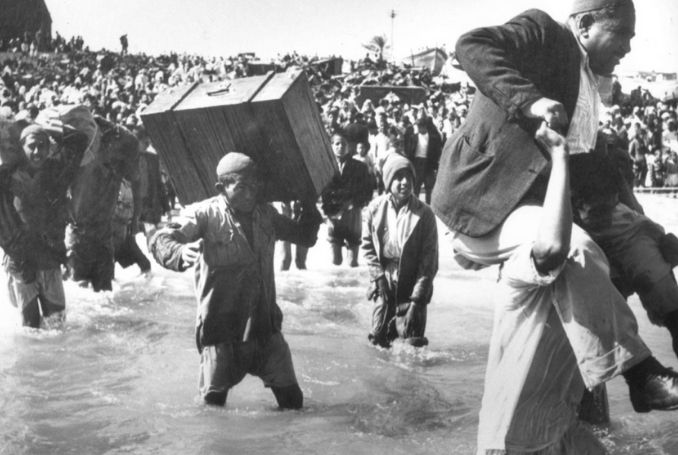
By Benay Blend
As Thanksgiving 2019 fades into the past so does the call for commemorating not the Pilgrims’ feast but rather the colonialist history of America. As Joel Doerfler observes, so, too, does the pedagogy of Palestine/Israel meet a similar fate. In particular, Doerfler looks at Rachel S. Harris’ edited volume Teaching the Arab-Israeli Conflict (2019), which he deems “a decidedly unedifying experience.”
Having taught a history course dealing with the “Zionist-Palestinian encounter” to high-school seniors in a New York City private school, Doerfler expressed initial interest in reading about how others present the subject to their students. My own impression was not so charitable. Presenting the colonization of Palestine as a conflict assumes a language of symmetry, as indeed the contributors do. This approach glosses over the seminal defining moment of that history, the nakba, the ongoing catastrophe of 1948, in order to present what contributor Shayna Weiss describes as “the intricacies of multiple, competing narratives.”
Still looking at the title, choosing to use the term “Arab” succeeds in further erasing the Palestinian identity, a move which tilts the curriculum’s stated goal of “neutrality” further towards the Zionist corner. In a journal article “Invention, Memory, and Place” (2000), the late Edward Said, declared the study of history is not a “neutral exercise in facts and basic truths.” Instead, it more often resembles a “nationalist effort” based on the need to ensure loyalty to an “insider’s understanding of one’s country, tradition, and faith.”
It’s no coincidence that Said mentions the late Howard Zinn, as both were highly critical of the notion of neutrality in historical writing. Reflecting on “The Massacres of History,” Zinn preferred to highlight “ignored episodes” in American history (not unlike those that are ignored in Harris’ anthology). Such instants, he believed, expose a much broader picture of “shameful moments” that might enable “ourselves [to see] more honestly, more clearly” today.
As Doerfler notes, an overarching theme of Harris’ collection is that the “conflict” is “exceptional in its complexity” and so “introducing students to the subject requires extraordinary sensitivity and caution.” The contributors arrive at this position, which they accept as a given without much question, because they presume that it is the “dueling narratives”—that of two equally deserving groups of people who each have a rightful claim to the land and with it the right to national self-determination—that generate this complex view. In this scenario, neither party is willing to negotiate their differences.
Returning to the theme of Thanksgiving, the holiday on which some of us refuse to partake in celebrating a massacre, while others might recall that rightful history but still honor the tradition because not to do otherwise might make their friends unhappy, what might be taken away that could lead to a different stance on teaching Palestine in a future edited collection?
Up to a point, Doerfler goes far in addressing this question, but he stops short of what Steven Salaita terms “reciprocal communalism,” a concept quite relevant to this topic. In The Holy Land in Transit: Colonialism and the Quest for Canaan (2006), Salaita explains that this phrase represents a dialogue among various ethnic groups with shared concerns.
On the one hand, Doerfler believes that the all-embracing goal of teaching a course about “Israel-Palestine” involves “help[ing] students make coherent sense of a specific and unique sociopolitical process.” On the other, using Salaita’s more inclusive paradigm places specific communities at the center of their history, thereby allowing scholars to bring the realities of occupation—in the Americas, in Palestine, and so on– to a broader audience without diluting the unique character of each struggle.
In an article for Left Voice, Tatiana Cozzarelli proposes that “This Thanksgiving, Don’t Celebrate Colonizers, Celebrate Indigenous Resistance” instead. In this way, all colonized groups of people are placed at the center of their tragedy, as is their resistance to it. Indeed, as Cozzarelli explains, the “myth of Thanksgiving,” a story of “friendship and kindness” between colonizer and colonized, has effectively “cover[ed] up the brutal genocide of native people” by European invaders.
The same “genocidal legacy,” Cozzarelli continues, repeats across the Americas, as it continues today against the Mapuche people in Chile, the Indigenous in Bolivia and Columbia, and in the United States and Canada, where Native America and First Nations people are continuing the struggle against the settler-colonial state.
“On this Thanksgiving,” Cozzarelli concludes, “let’s give thanks for and show solidarity with indigenous resistance movements both in the United States and across the world, for those people who are fighting at this very moment against the violence of centuries of colonial and imperialist domination.” Although her focus is on the Americas, her last comment harks back to Salaita’s call for Indigenous solidarity, including Palestine, in their ongoing struggle for liberation.
By focusing on these truths, writes Ruth Hopkins, “we are making some headway in beginning to acknowledge the Indigenous blood on America’s hands.” A Dakota/Lakota Sioux writer, biologist, attorney, and former tribal judge, Hopkins wants to “change the system from one of conquest and death to sustainability and life,” but that educational work, I believe, needs to include America’s international role in augmenting settler-colonial oppression abroad, as in the case of Palestine.
Such comparative studies bring us full circle away from Rachel Harris’ collection, a curriculum that glosses over the settler-colonial nature of what she calls a “conflict.” In a recent interview on Democracy Now, Nick Estes, co-founder of the indigenous resistance group The Red Nation, professor of American Studies at the University of New Mexico, and a citizen of the Lower Brule Sioux Tribe, talked about his book Our History Is the Future: Standing Rock Versus the Dakota Access Pipeline, and the Long Tradition of Indigenous Resistance.
At Standing Rock, he said, there were hundreds of tribal nation flags, as well as flags that recalled international solidarity movements with the Global South. Significantly, the Palestinian flag stood out, because, Estes says, “our Palestinian relatives,” much like the Lakota, are “still facing the brunt of settler colonialism” in the form of “continued dispossession of Indigenous territory and rights.” From that, he concluded, “settler colonialism in Israel — or, in Palestine, is really an extension of settler colonialism in North America,” an overarching theme that could very well help Palestine/Israel curriculum avoid what Doerfler calls an “epistemological and moral void” inherent in Harris’ book.
– Benay Blend earned her doctorate in American Studies from the University of New Mexico. Her scholarly works include Douglas Vakoch and Sam Mickey, Eds. (2017), “’Neither Homeland Nor Exile are Words’: ‘Situated Knowledge’ in the Works of Palestinian and Native American Writers”. She contributed this article to The Palestine Chronicle.
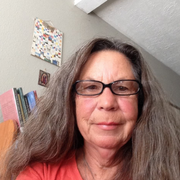
– Benay Blend earned her doctorate in American Studies from the University of New Mexico. Her scholarly works include Douglas Vakoch and Sam Mickey, Eds. (2017), “’Neither Homeland Nor Exile are Words’: ‘Situated Knowledge’ in the Works of Palestinian and Native American Writers”. She contributed this article to The Palestine Chronicle.

